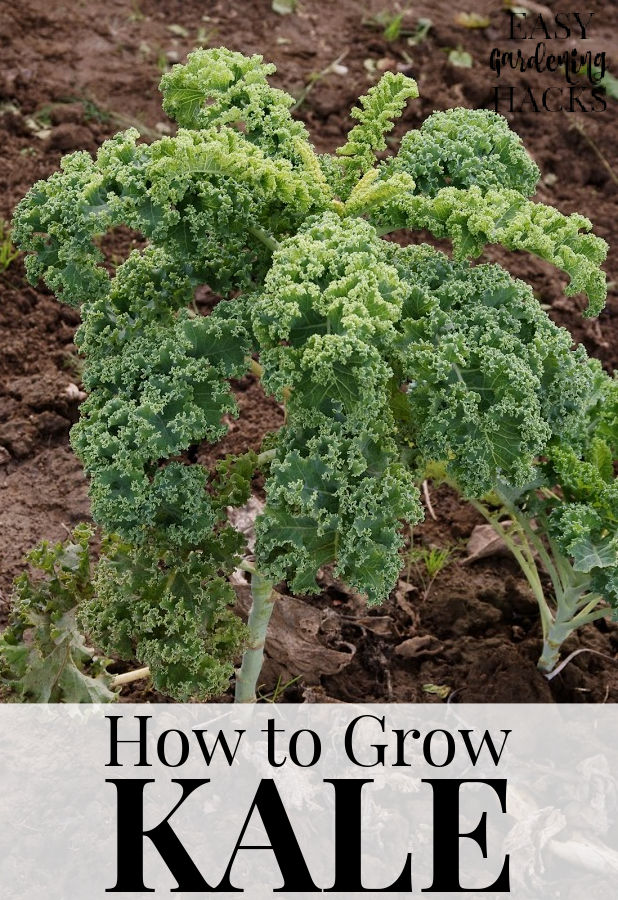Use these tips on how to grow kale if you would like to add this hardy vegetable to your garden this year.

How to Grow Kale
Kale, a part of the cabbage family, is a wonderful thing to grow. You can use it in salads, soups and casseroles. It has tender, sweet leaves that only get sweeter when the air gets cooler. Try growing kale in the spring or fall for best results. There are many different varieties of kale, but they all start with these basic steps. Here are some helpful tips on how to grow kale from seedling to harvest.
How to Grow Kale from Seed
First, make sure that you are not using seeds older than 4 years as they will be expired past that. Start your kale seeds by using a soil-less mixture that is made for growing veggies. In each little section of a growing ray, place 2-3 seeds. Cover with ½ inch of growing mix. For more detailed instructions on how to grow kale from seed, check out this post.
How to Transplant Kale Seedlings
Transplant kale seedlings when the temp is no more than 60 degrees F outside. You will want to transplant them to a spot that gets at least partial sun for 4-6 hours a day. Kale does not like hot, so don’t transfer to late into the spring. For more detailed tips on how to transplant kale from seedlings, check out this post.
How to Deal with Kale Pests
Kale has two main pests; aphids and flea beetles. Here are some ways to deal with these so your plants are not destroyed.
Aphids- Aphids are little green bugs that are pests to many vegetables and fruits. They “drink” the sap from your plants and since kale is full of moisture, they love it. You may see signs such as curled leaves or a sticky substance. The Old Farmer’s Almanac suggests making a solution of soap and isopropyl alcohol to use as an insecticide.
(https://www.almanac.com/pest/aphids)
Flea Beetles- Flea beetles are annoying pests because they are able to jump away and they leave holes in the leaves of your kale. Try planting catnip or basil near your plants to prevent them.
How to Harvest Kale
Kale can be harvested a couple of times until the outdoor temp is as low as 20 degrees F. A little frost can actually help make them taste better as kale thrives in cooler, even cold weather, This is why you see them for sale in pots in the fall.
You can harvest kale leaves when they are big and about the size of the hand that will be picking them. Don’t pick from the center as these leaves will help you get another harvest or two, depending on where you live. You can gently remove leaves by hand or clip them with scissors.
If it will get colder sooner than you want, you can extend your harvest time by simply covering your kale for a little bit.
Leave a Reply